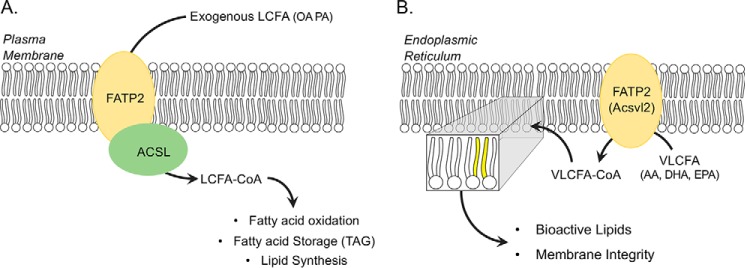Figure 1.
Roles of FATP2 in fatty acid transport and very-long-chain fatty acid activation. A, FATP2 functions at the plasma membrane in concert with a long-chain acyl-CoA synthetase (ACSL) to couple fatty acid transport and activation of long-chain fatty acids (LCFA; e.g. palmitate (PA) and oleate (OA)), resulting in LCFA-CoA, which enters downstream lipid metabolic pathways (e.g. fatty acid oxidation, fatty acid storage (triglycerides (TAG)), and lipid synthesis). B, FATP2 also functions as a very long chain acyl-CoA synthetase (Acsvl2) in the endoplasmic reticulum, where it activates VLCFAs (arachidonic acid (AA), docosahexaenoic acid (DHA), and eicosapentaenoic acid (EPA)). The resulting VLCFA-CoA enters downstream lipid metabolic pathways required for membrane integrity (shown as yellow acyl chains) and precursors for bioactive lipid synthesis.

